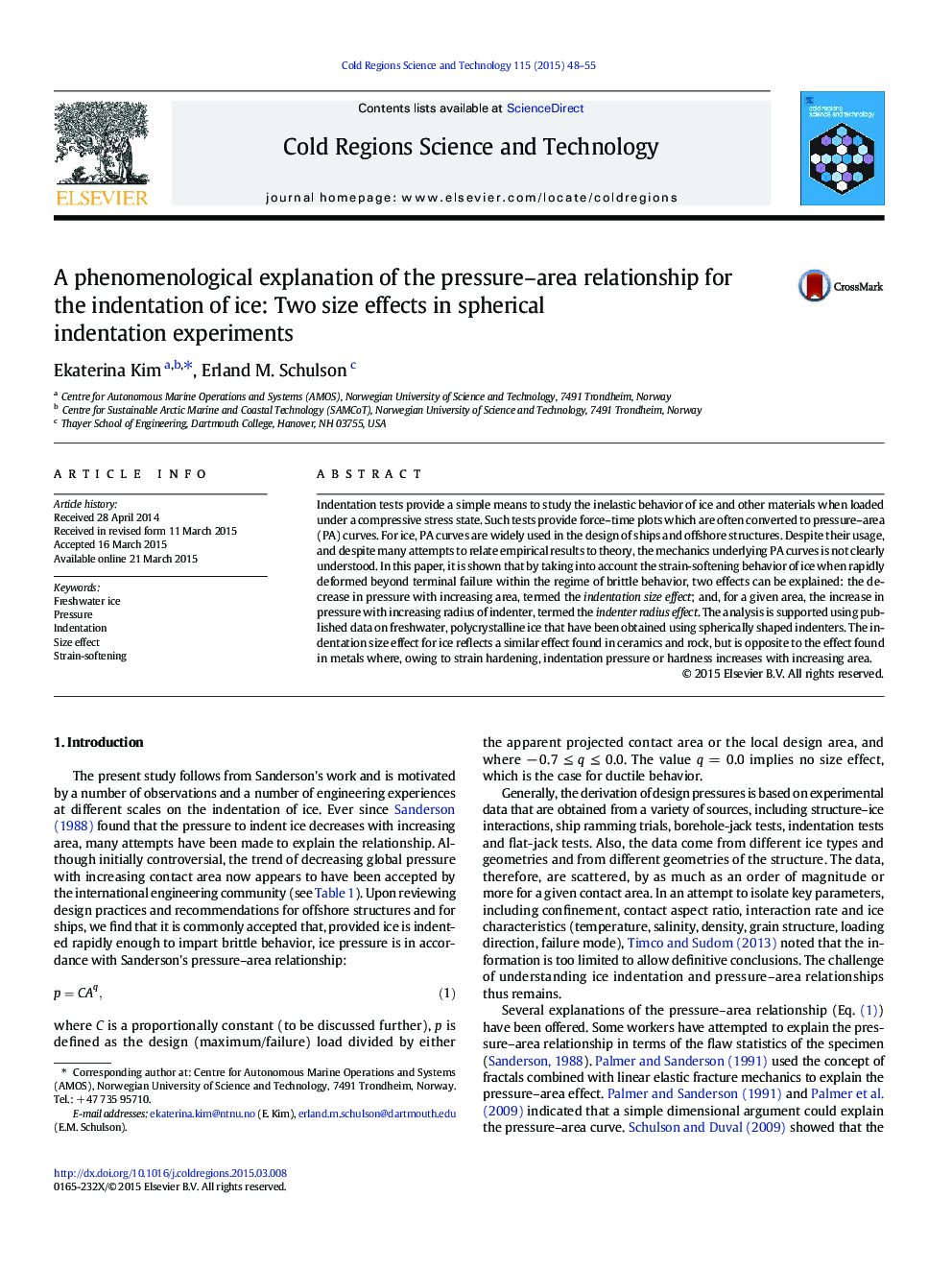| Article ID | Journal | Published Year | Pages | File Type |
|---|---|---|---|---|
| 6426841 | Cold Regions Science and Technology | 2015 | 8 Pages |
Abstract
Indentation tests provide a simple means to study the inelastic behavior of ice and other materials when loaded under a compressive stress state. Such tests provide force-time plots which are often converted to pressure-area (PA) curves. For ice, PA curves are widely used in the design of ships and offshore structures. Despite their usage, and despite many attempts to relate empirical results to theory, the mechanics underlying PA curves is not clearly understood. In this paper, it is shown that by taking into account the strain-softening behavior of ice when rapidly deformed beyond terminal failure within the regime of brittle behavior, two effects can be explained: the decrease in pressure with increasing area, termed the indentation size effect; and, for a given area, the increase in pressure with increasing radius of indenter, termed the indenter radius effect. The analysis is supported using published data on freshwater, polycrystalline ice that have been obtained using spherically shaped indenters. The indentation size effect for ice reflects a similar effect found in ceramics and rock, but is opposite to the effect found in metals where, owing to strain hardening, indentation pressure or hardness increases with increasing area.
Related Topics
Physical Sciences and Engineering
Earth and Planetary Sciences
Earth and Planetary Sciences (General)
Authors
Ekaterina Kim, Erland M. Schulson,
